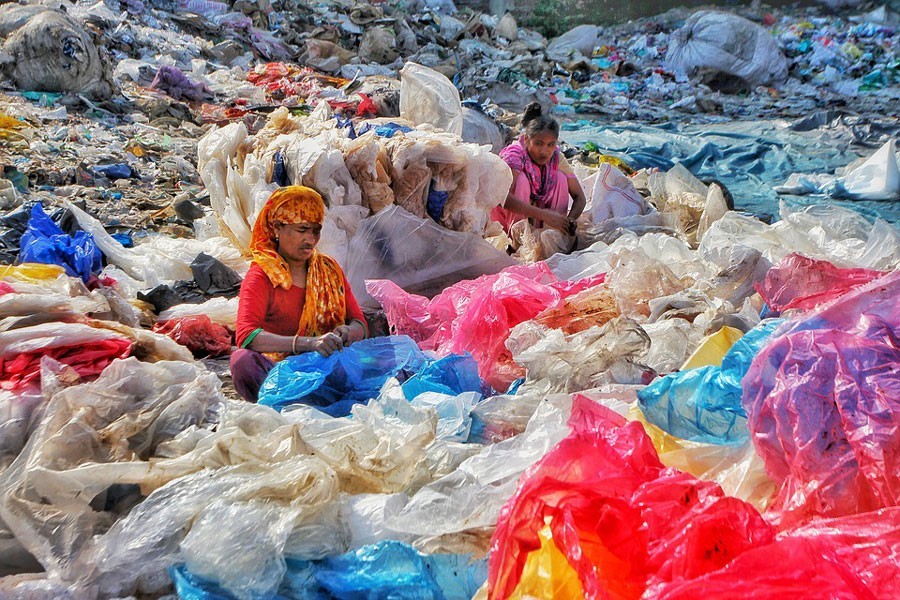Bangladesh’s per capita plastic consumption in urban areas tripled to 9.0 kg in 2020 from 3.0 kg in 2005, according to a new study of the World Bank.
Meanwhile, Dhaka's annual per capita consumption of plastic reached 24 kg with about 2.35 per cent, said the report published on Monday in Dhaka
Due to the increasing quantity of waste in the city, it has become a lucrative business for so many people, also leading to clashes among groups in many areas over making money in waste management, said Md Selim Reza, Chief Executive Officer of Dhaka North City Corporation (DNCC).
He added that the city corporation has brought significant changes in positivity managing waste in Dhaka.
Rapid urbanization and development have increased the consumption of plastics. In 2020, daily per capita waste generation in both Dhaka North and South city corporations was 0.61kg, with a population of 10,596,475 in the Dhaka metropolitan area, the estimated waste generated per day is 6,164 tons, the World Bank study read.
Analysis of waste composition, according to the report, shows that 10 per cent of this waste is plastic waste.
Consumption of low-density polythene- IDPE packaging materials increased fivefold in 2020 compared to 2005, the World Bank said in the report.
The COVID-19 pandemic has increased the consumption of packaging and shopping bags made of IDPE, the report stated.
The baseline on plastic waste says only 30 per cent of postconsumer packaging waste is collected, according to the study.
Ten per cent of municipal waste consists of plastics (646 tons collected per day), of which 48 per cent goes to landfills, 37 per cent is recycled, 12 per cent ends up in khals and rivers, änd 3 per cent is dumped in drains and unserved areas of the city corporations, the World Bank report further said.
An estimated 24,032-36,047 tons of plastic waste are disposed of per year in 1,212 hot spots around khals and rivers, all of which are connected to the river system, according to the report.
The recycling industry does not have the capacity to recycle MIP. Packs and wrappers are unattractive to recyclers because they are small, laminated, and printed with ink, the report added.
PET is recycled in 300 facilities in Dhaka, according to the World Bank study.
The number of such units was increasing rapidly because exporters can sell PET pellets on the international market at a price of BDT'80-120/ kg, higher than the value in the domestic market, but recent reductions in oil prices have made PET recycling less attractive, the report noted.
The textile industry in Bangladesh can create huge market demand for recycled PET and play an important role in bringing circularity in the plastic life cycle, the report added.
Sustainable management of plastic will be crucial for Bangladesh to tackle the increasing plastic pollution and ensure green growth, underlined the World Bank Report.
The National Action Plan for Sustainable Plastic Management focused on circular use of plastic based on a 3R strategy: Reduce, Reuse, Recycle, according to the report.
"With rapid growth and urbanization, Bangladesh faced a sharp increase in both plastic use and pollution. The COVID-19 pandemic has escalated the problem of mismanaged plastic waste," said Dandan Chen, World Bank Acting Country Director for Bangladesh.


